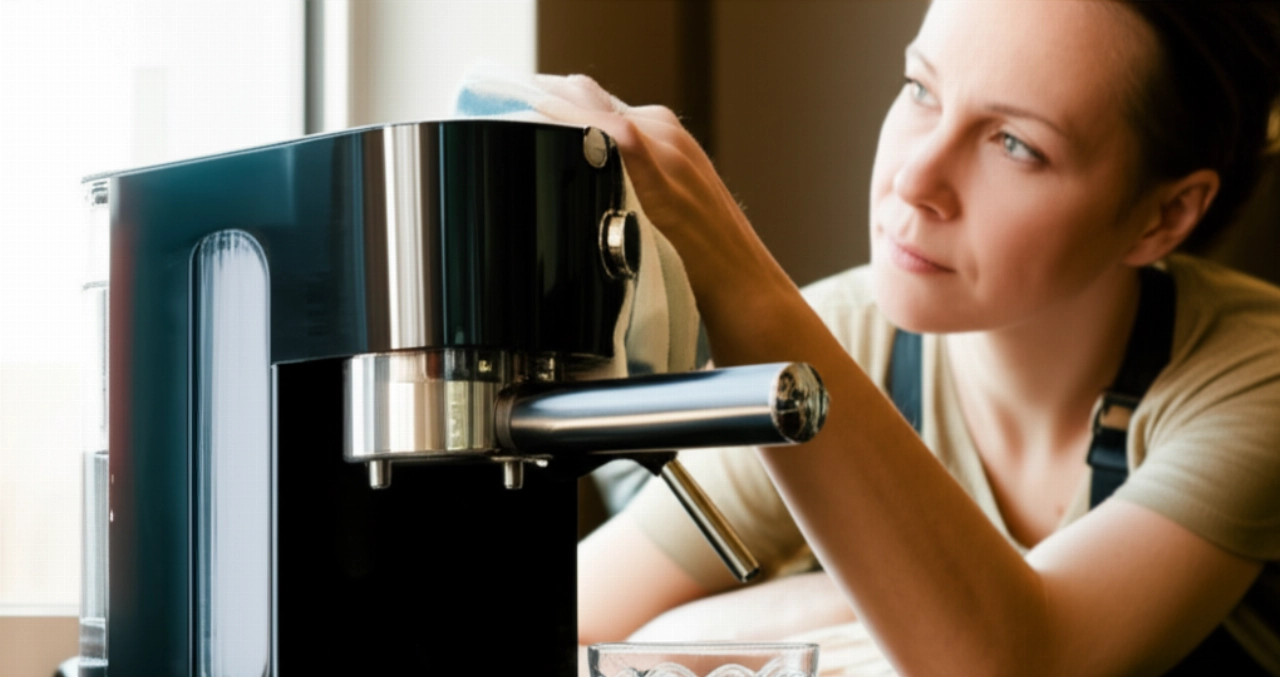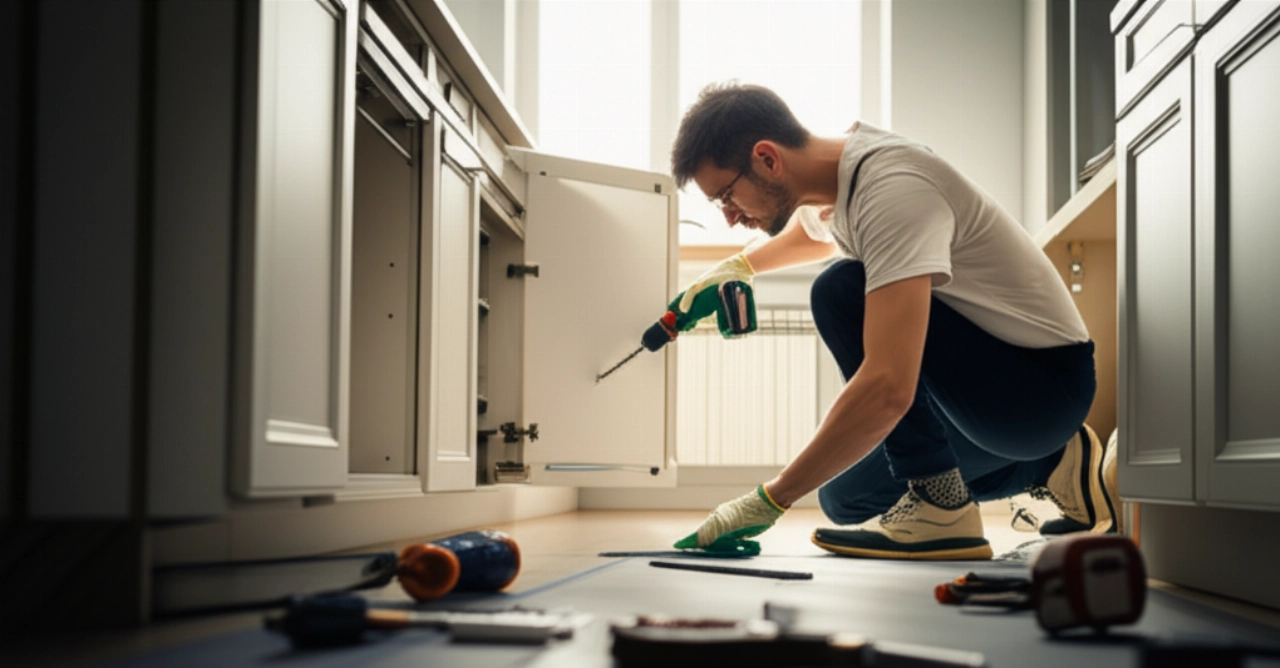Do you already feel that knot in your stomach just thinking about having to disconnect and pack the washing machine, refrigerator, or oven? Preparing appliances for a move isn't just a matter of unplugging them. It's a delicate operation that, if done incorrectly, can turn into a nightmare of damage, unexpected costs, and frustration. Are you wondering how to prepare appliances safely and effectively?
You're in the right place. This guide is your detailed map to transform anxiety into peace of mind, ensuring that each of your appliances arrives at its destination intact and functional. At traslòchi.it, we transform the complexity of appliance preparation into a clear and safe procedure, guaranteeing their integrity and your savings.

Beyond Simple Disconnection: Why Professional Preparation is Crucial
Many underestimate the importance of meticulous appliance preparation. It's not just about disconnecting cables; it's about preventing water leaks, internal breakages, malfunctions, and even voiding warranties. Every appliance is a significant investment and a pillar of your daily life. A damaged refrigerator or a broken washing machine is not just a repair or replacement cost, but a source of stress and inconvenience that can delay your settling into your new home or office.
Entrusting those who know exactly how to prepare appliances means protecting your assets and your peace of mind from the very first moment. It's the first step towards safe transport and peace of mind.
The Safety Map: Essential Steps for Each Appliance
Here's a practical guide for preparing your appliances, a true toolkit for your peace of mind:
- Refrigerator and Freezer: Empty them completely at least 24-48 hours before the move. Defrost them, clean them thoroughly, and dry them perfectly to prevent mold and bad odors. Secure the doors with tape or straps to prevent accidental opening during transport.
- Washing Machine and Dryer: Disconnect the inlet and outlet hoses and make sure to remove all residual water. It is essential to secure the drum with the appropriate safety locks (often provided at purchase or available as spare parts) to prevent damage to internal components during movement. Protect cables and hoses with adequate appliance packaging.
- Dishwasher: Similar to the washing machine, empty and drain all residual water. Clean the filters and secure the hoses and cables. Make sure there are no dishes or objects inside that could move and cause damage.
- Oven and Hob: Clean both the inside and outside thoroughly. Remove grates, trays, and burners, packing them separately. Secure oven knobs and doors with specific tape to prevent them from opening.
- Televisions and Electronic Devices: Disconnect all cables, labeling them to facilitate reconnection. Use the original packaging if available, otherwise opt for sturdy boxes with ample protective material (bubble wrap, foam). Protect screens with films or padded blankets.
- Small Appliances: Clean them, wrap them individually in bubble wrap, and place them in sturdy boxes, filling empty spaces to prevent movement.
The Pitfalls of DIY: Common Mistakes and How to Avoid Them
Attempting to manage appliance preparation without the right experience can lead to unpleasant consequences:
- Water Damage: Not completely emptying a washing machine or dishwasher can cause leaks and damage not only to the appliance but also to other belongings.
- Structural Damage: Transporting a refrigerator horizontally or not securing a washing machine's drum are common mistakes that can irrevocably compromise the appliance's function.
- Component Breakage: Delicate parts like electronic boards, compressors, or motors are extremely vulnerable to impacts and vibrations if not adequately protected.
- Warranty Loss: Often, damages caused by improper transport are not covered by the manufacturer's warranty.
- Unexpected Costs: Damage means repair costs or, worse, replacement costs, which negate any supposed DIY savings.
The solution? Rely on a moving company service that includes specialized technical assistance for the preparation and safe transport of your appliances.
The Traslòchi.it Difference: Your Guarantee of Protection and Peace of Mind
At traslòchi.it, we don't just move objects; we take care of your belongings as if they were our own. Our philosophy is based on E-E-A-T: Experience, Expertise, Authoritativeness, Trustworthiness. This translates into:
- Qualified Specialists: Our team is trained to handle every type of appliance, from the most common to the most delicate, with established procedures and specific tools.
- Certified Packaging: We use only high-quality materials and state-of-the-art appliance packaging techniques to ensure maximum protection.
- Comprehensive Insurance: Every move is covered by insurance that protects you from any eventuality, offering you total peace of mind.
- Transparency and Clarity: Our moving quote is detailed and without hidden costs, including all phases of preparation and transport.
With traslòchi.it, appliance preparation becomes a smooth and worry-free process, allowing you to focus on your new beginning.
Frequently Asked Questions on How to Prepare Appliances for Moving
Here are some of the most common questions our clients ask us:
Q: Do I have to disconnect all appliances myself?
A: It depends on the service you choose. For your safety and the validity of warranties, it is always advisable to rely on qualified technicians. At traslòchi.it, we can also take care of this phase, ensuring professional disconnection.
Q: How do I secure the washing machine drum?
A: Each washing machine model has a specific system, often with locking screws or brackets provided at purchase. This is a fundamental step to prevent damage to the drum and internal components during safe transport. If you don't have the original locks, we can provide assistance or advise you on the best solution.
Q: Can I transport the refrigerator horizontally?
A: Absolutely not! The refrigerator must be transported vertically to avoid damage to the compressor and the refrigerant circuit. If it's absolutely impossible to keep it vertical for a short distance, it is essential to let it rest in a vertical position for several hours (at least 12-24) before turning it back on.
Q: How long before the move should I empty and defrost the refrigerator?
A: We recommend emptying and defrosting the refrigerator and freezer at least 24-48 hours before the move. This allows for complete defrosting and thorough cleaning, preventing mold and bad odors during transport.
Q: Is a specific moving quote necessary for appliances?
A: A detailed quote should always include appliance handling, clearly specifying whether disconnection, packaging, and reconnection (if requested) are included in the cost. Always ask for maximum clarity to avoid surprises.
Your Move Starts with Certainty: Request Your Quote Now
We've seen how appliance preparation is not a detail, but a fundamental pillar for a smooth move. Perhaps you think it's too daunting a task or that relying on professionals is an excessive cost. In reality, it's an investment in your peace of mind and the protection of your most valuable assets.
Enough with uncertainty. Your new beginning deserves to be serene. The quote you receive is not just a number, but a detailed plan for your peace of mind. It's free, no-obligation, and takes only 30 seconds. Click here, fill in the details, and let our specialists start working for you. Start your move now on the right foot, knowing that every appliance is in safe hands.
If you are planning an international move, you might also be interested in our complete guide on documents for moving to Switzerland. For general organizational tips, read our article on how to plan a stress-free move.





